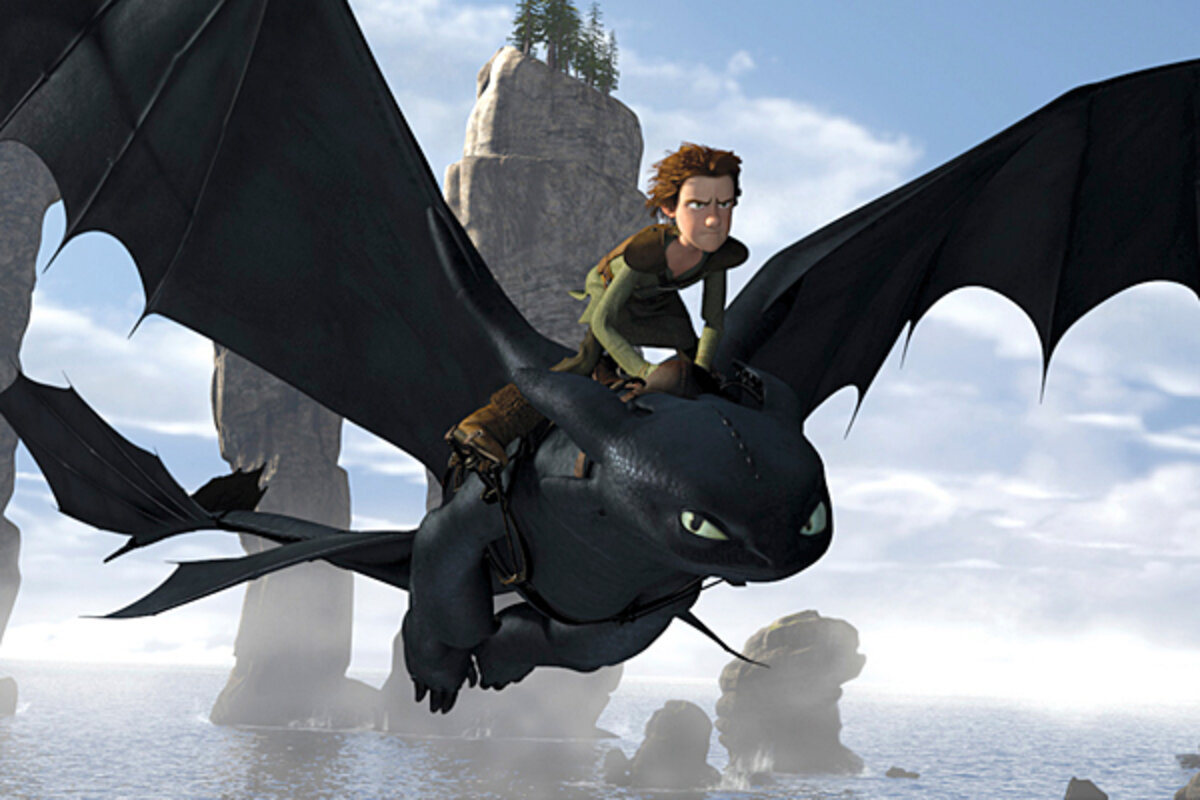Want to see a 3D movie? Ticket prices go up 20 percent.
Loading...
| Universal City, Calif.
Don and Muffy Sorenson are putting on a good face for the kids.
‚ÄúIt‚Äôs fine, it‚Äôs fine,‚ÄĚ says Mr. Sorenson, a file clerk, standing in line at the Universal Studios multiplex for ‚ÄúHow to Train Your Dragon‚ÄĚ in 3-D. ‚ÄúIf you want to have a good time, you have to pay for it.‚ÄĚ
On Friday, the ticket price for a 3-D movie at that theater rose to $15 ‚Äď a $1 increase.
‚ÄúI don‚Äôt know how much more of this we can take,‚ÄĚ whispers his wife.
In markets across the United States, ticket prices for 3-D movies jumped more than 20 percent Friday. Chains including Regal Entertainment Group, Cinemark Holdings Inc., and AMC Entertainment Inc. are trying to capitalize on the hits ‚ÄúAvatar‚ÄĚ and ‚ÄúAlice in Wonderland.‚ÄĚ
In Danvers, Mass., that means prices for 3-D movies are rising from $14.50 to $17.50. And at a Seattle multiplex, a regular 3-D showing is now $15, up from $13.50. For IMAX 3-D, it’s now $17, up from $15.
‚ÄúThis is a very dangerous situation for the movie industry,‚ÄĚ says Paul Dergarabedian, box-office analyst for Hollywood.com. ‚ÄúWhen is too much too much? The demand has been huge, but theater owners should not just think that they can charge whatever they want, because there is a point when people will literally just stop coming because they can‚Äôt afford it.‚ÄĚ
Even though last year‚Äôs box-office revenue hit $10.6 billion (a record), and this year is 10 percent ahead of last, 30 percent of the 2010 box office is from just two films, ‚ÄúAvatar‚ÄĚ and ‚ÄúAlice in Wonderland,‚ÄĚ Mr. Dergarabedian says.
Consumers haven’t yet been given the chance to vote with their wallets, points out Adam Hanft, a consumer analyst in New York. But he thinks they’ll be willing to pay a few more dollars for 3-D.
‚ÄúEvery market eventually transitions from one technology to another. The movie industry is unique in that it has remained essentially the same as other entertainment platforms were transformed around it,‚ÄĚ Mr. Hanft says. ‚ÄúAs the industry finally moves forward, there will inevitably be some challenges with bridging the pricing.‚ÄĚ
The cost of the industry's investment in 3-D is worth it, argues John O’Leary, a cinema historian and marketing analyst at Villanova University in Pennsylvania. That’s because it is drawing people away from their other new and expensive entertainment delivery devices, such as iPods, Wiis, and flat-screen TVs.
‚ÄúOf course, it is now up to Hollywood to be sure that they can deliver stories that are a good fit for the new 3-D format and that audiences will care about,‚ÄĚ Mr. O‚ÄôLeary says.
History also might repeat itself.
In the early 1950s, the film industry was battling declining ticket sales. Many reasons were cited for the decline: Some of them were a result of demographic changes ‚Äď such as a move by young families to new suburban communities ‚Äď and some were because of technological changes, specifically new ways of delivering entertainment. These included 45 r.p.m. singles, high-fidelity stereo systems, and television.
‚ÄúThese changes persuaded many Americans that their investments in new homes and new systems of entertainment delivery would not be maximized by a trip to the city to pay for parking, a baby sitter, and movie tickets,‚ÄĚ O‚ÄôLeary says. ‚ÄúThe film industry answered with technology, including 3-D, Cinerama, wide screen, and Technicolor.‚ÄĚ
But some of the new technology, such as 3-D, became prohibitively expensive for theater owners, O’Leary says. They effectively killed it by the mid-1950s.
Still, films became more of an experience ‚Äď an experience that couldn‚Äôt be matched by homebound entertainment delivery systems ‚Äď and this helped rescue the film industry.
Now, will new technologies once again lead the movie industry ahead financially?
And will moviegoers accept the price hikes?
Indeed, says AMC theaters spokesman Justin Scott, movie fans will keep coming as long as there are stories they want to see. ‚ÄúThey will cut out all kinds of more expensive entertainment like sports before they stop going to the movies,‚ÄĚ he adds.




